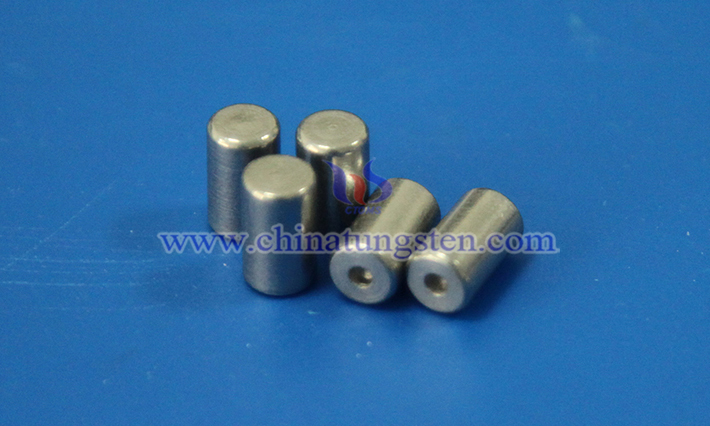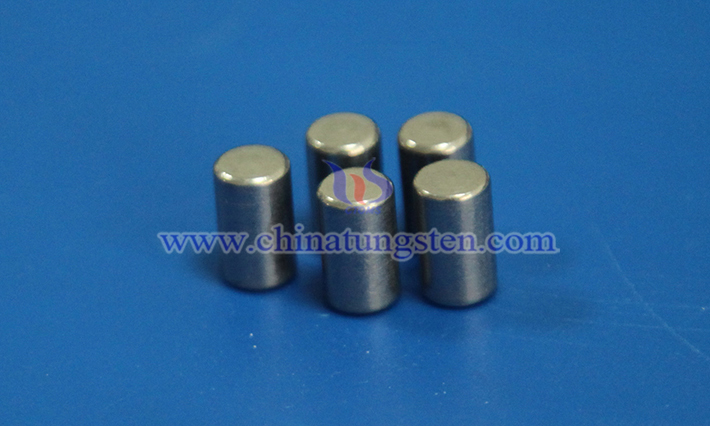Factors Affecting the Thermal Fatigue Performance of Barium Tungsten Electrodes
- Details
- Category: Tungsten Information
- Published on Tuesday, 27 May 2025 17:25
To improve the thermal fatigue performance of barium tungsten electrodes, multi-scale coordinated optimization is required: regulating the composition from the atomic scale, designing the strengthening phase at the microscale, and optimizing the geometry at the macroscale to reduce stress concentration. The factors affecting the thermal fatigue performance of barium tungsten electrodes can be summarized into the following key aspects:
1. Material Composition and Microstructure
Composition Regulation: The content of barium directly affects the electron emission performance and structural stability. Excessive barium may weaken the grain boundaries and reduce fatigue resistance; the purity of tungsten and added elements (such as rare earth oxides) can refine the grains and enhance high temperature strength.
Microstructure: Fine grain structure can inhibit crack propagation, but it is necessary to balance grain growth (grain coarsening at high temperature will reduce toughness); excessive porosity is easy to become a crack source, and the densification process is crucial; the second phase distribution (such as oxide dispersion strengthening) can pin dislocations and improve creep resistance and fatigue performance.

2. Processing Technology
Sintering Process: temperature, pressure and time affect density and grain size. High temperature sintering may promote densification, but may also cause excessive grain growth.
Heat Treatment: Annealing can eliminate residual stress and improve material homogeneity; quenching or aging treatment may introduce strengthening phases.
Surface Treatment: Coatings (such as anti-oxidation coatings) can reduce environmental erosion, but the thermal expansion coefficient of the substrate must be matched to avoid interface stress.
3. Working Environment and Conditions
Temperature Cycle Parameters: temperature gradient, heating and cooling rate and number of cycles directly determine the amplitude of thermal stress. Rapid temperature changes intensify thermal shock and accelerate fatigue damage.
Environmental Atmosphere: Oxidizing atmosphere causes the surface oxide layer to peel off and induce stress concentration; inert or vacuum environment can delay degradation.
Mechanical Load: Superimposed mechanical stress (such as vibration) will work synergistically with thermal stress to accelerate crack propagation.

4. Physical and Mechanical Properties
Coefficient of Thermal Expansion (CTE): High CTE materials produce greater strain when the temperature changes, and the mismatch needs to be reduced through composition design (such as adding low CTE phase).
Thermal Conductivity: High thermal conductivity helps to uniform temperature distribution and reduce local thermal stress.
Elastic Modulus and Strength: High modulus materials are more sensitive to thermal stress and need to improve crack resistance through toughening mechanisms (such as phase transformation toughening).
5. Interface and Residual Stress
Interface Bonding: Insufficient bonding strength of barium-tungsten interface or coating-substrate interface is prone to delamination, and optimizing interface structure (such as gradient layer) is the key.
Residual Stress: Residual tensile stress in the manufacturing process will be superimposed on thermal stress, which needs to be regulated by process optimization (such as slow cooling) or post-treatment (such as shot peening).
6. Microstructural Stability
High-Temperature Phase Change: Grain growth, coarsening or dissolution of the second phase under long-term high temperature will weaken the material, and stabilizers (such as ZrO₂) need to be added to inhibit organizational evolution.
Element Diffusion: The migration of barium may lead to composition segregation and affect local performance, and the diffusion path needs to be limited by grain boundary engineering.
- Chinatungsten Online: www.tungsten.com.cn
- CTIA GROUP LTD: en.ctia.group
- Tungsten News & Price: www.ctia.com.cn
- Molybdenum News & Price: news.molybdenum.com.cn
- Tel.: 86 592 5129696; Email: sales@chinatungsten.com



 sales@chinatungsten.com
sales@chinatungsten.com